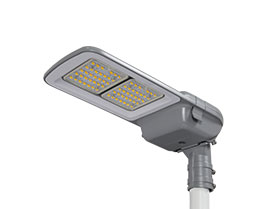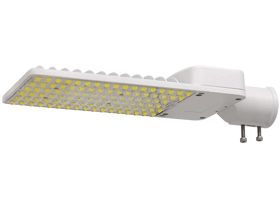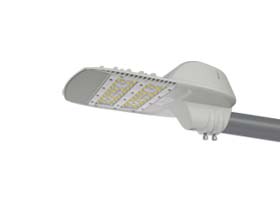Research Ideas of LED Street Lights
Ⅰ. Issues that need to be understood about LED street lights and road lighting
1. For LED street lamps with a color temperature of about 2800K, the light efficiency of the light source (100~120Lm/W) is not significantly better than that of high-pressure sodium lamps (100~120Lm/W). Why does the application of LED in road lighting save energy?
2. The target of road lighting is on the road. Can the secondary light distribution technology be designed according to the characteristics of road lighting to achieve energy saving?
Ⅱ. Analyze the shape and characteristics of LED street lighting road lighting:
1. The light pole is installed on the side of the road, forming a phenomenon of asymmetric light angle;
2. Road width: light pole height: light distance = 1:1:3 (shading lamps), forming a rectangular illuminated area;
3. Roads are divided into different grades according to the traffic flow and speed limit, and the requirements for brightness and uniformity of roads of different grades are also different.
Ⅲ. The evaluation method of LED street lights
It is unscientific and too far-fetched to use the lighting performance evaluation method of traditional light sources to evaluate the characteristics of LED street lamps. This paper discusses the use of light utilization as an evaluation method for LED street lights.
LED lighting efficiency (Lm/W) does not truly reflect the energy efficiency of LED street lights. The luminous flux of a single light-emitting diode in road lighting cannot be used as a light source alone; after the LED is integrated into the module, due to the different thermally conductive substrates used, the light output is not equal to the sum of the luminous flux of the LED.
Therefore, LED street lamps should focus on the luminous flux of the lamps rather than the luminous flux of the light source; the luminous efficiency of the lamps should be paid attention to instead of the luminous efficiency of the light source.
However, the light efficiency (Lm/W) of lamps cannot truly evaluate the performance of LED street lamps. Lighting efficiency is an important indicator to measure the energy saving of general lighting. As functional lighting, LED street lights have one more parameter of "secondary light distribution" than general lighting. The more uniform the secondary light distribution, the lower the luminous efficiency of the lamps; Sexual lighting, the secondary light distribution effect is worse.
To this end, the lighting utilization rate (the road luminous flux/lamp luminous flux) is used as the key evaluation index, and the focus of this research is locked, that is, the ratio of the luminous flux of the lamps to the illuminated object is the real and effective reflection of the pros and cons of functional lighting. The key! If you are interested in wholesale led street lamp, please contact us!
Benchmarking the utilization rate of lighting, on the premise of meeting lighting specifications, power becomes an important indicator to measure product performance. The technical level of heat dissipation, light and electric drive of LED street lamp manufacturers is the key to determining its power!
HPWINNER has been rapidly growing its business globally, sharing with customers precisely tailored, fast-delivered products and services. Welcome to consult.
 English
English  العربية
العربية  中文
中文
 Deutsch
Deutsch
 Türkçe
Türkçe

 日本語
日本語


